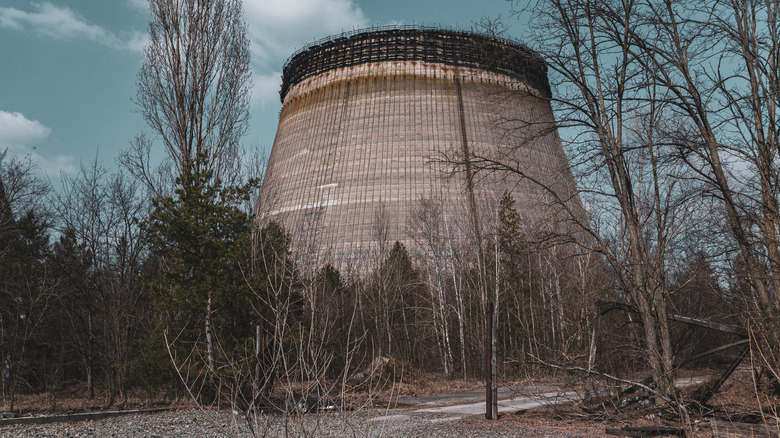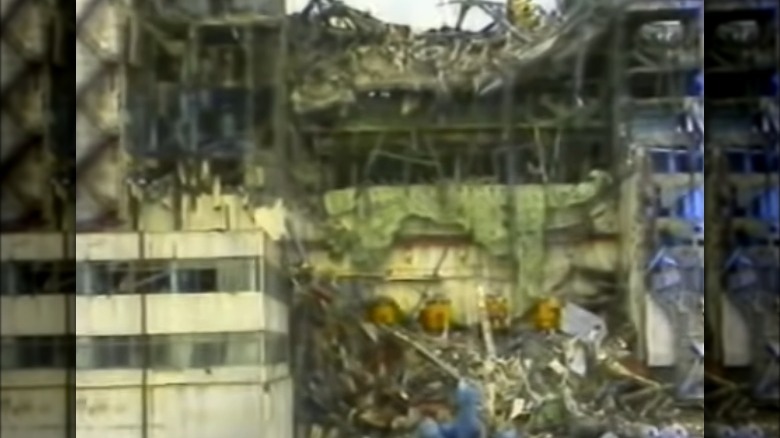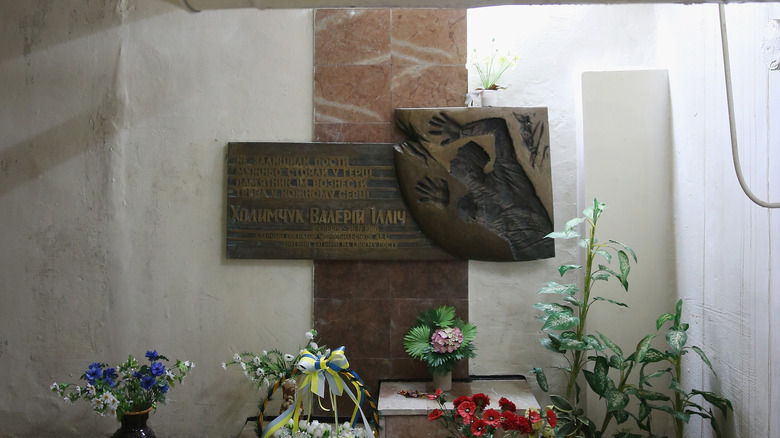Why The First Victim Of The Chernobyl Disaster Could Never Be Recovered
The Chernobyl disaster is considered the world's worst nuclear accident in history. The Chernobyl plant, located near Pripyat in modern-day Ukraine, suffered a core explosion and partial meltdown on April 25–26, 1986. As a result, radioactive material leached into the environment. Experts estimate that up to 50 people died during the initial explosion, with many others suffering radiation burns and other health ramifications; many died later (via Britannica). The International Atomic Energy Agency adds that 28 firemen and workers that were part of the initial response and cleanup also died within three months of the disaster.
Following the accident, a lot of secrecy surrounded the event and the Soviet Union made clear efforts to conceal the event's magnitude for as long as possible. Recently released documents show how extensive the cover-up was, including the number of deaths, how long the government waited to order evacuation (36 hours), and just how badly affected the soil and water in the area were. Just a year after the accident, the Komitet Gosudarstvennoy Bezopasnosti (KGB), or the Committee for State Security, is reported to have used fake samples so the results wouldn't be so alarming), as reported via Reuters.
So while we may never know precisely how many people died during the initial explosion (or after as a direct result of it), we do know the name of the first person to lose their life in it: Valery Khodemchuk, an experienced nuclear mechanical engineer (per History of Yesterday).
Explosion and Khodemchuk's death
Friday, April 25, 1986, started as a regular day, and workers at the high power channel reactor (RBMK) 4 inside the Chernobyl nuclear power plant were planned to perform a routine shutdown. The shutdown was part of a system to check the turbines and pumps and make sure they would be able to keep the reactor stable in case the plant ever lost power (via World Nuclear Association).
But things went wrong almost from the beginning. For starters, the test was delayed by almost 10 hours, which meant the night shift employees had to take over. Not only were they not properly trained on performing the test, but they also had no clear understanding of the safety protocols to be employed. Workers did not wait the required time to get the core temperature to a safe level before attempting the test. Then they tried to get the power back up too quickly after the shutdown. Once the reactor was shut down at 1:23:04 a.m., there was no way back, and the disaster at Chernobyl was inevitable (per CNET).
At no point was there any communication with workers in other sections of the plant to alert them of possible danger, and the experiment forges ahead despite the obvious mistakes made. Valery Khodemchuk was waiting in the turbine room of RBMK 4 while the test was conducted to report back on the performance of the test. He was standing right next to a reactor about to explode (per History of Yesterday).
Final resting place
At 1:23:45 a.m., a massive steam explosion took place in reactor 4, leading to a chain reaction, according to CNET. Khodemchuk, who was in the main pump halls waiting for the test to end, was the first person killed. Reports vary on whether or not he died immediately, as another worker, Vladimir Shashenok, died as a result of direct radiation exposure while trying to rescue Khodemchuk (per History of Yesterday). As reported in 1986 by the Los Angeles Times (LA Times), Shashenok was pulled out of the plant and able to say, "There, Valery," before dying.
Valery Khodemchuk would never come out. The explosions in RBMK 4 caused a massive fire and destroyed the building. Khodemchuk's body would remain forever buried under the debris, according to the LA Times. At the time, Soviet news outlet Pravda reported that the reactor "would become his coffin," which became a literal reality soon after as the reactor was encased in deep layers of cement called a sarcophagus to contain the radiation and prevent leaking (per the LA Times and Express).
The World Nuclear Association (WNA) later reported that the disaster at Chernobyl was the result of "a flawed reactor design that was operated with inadequately trained personnel." Additionally, the WNA also stated that at the time of the disaster, 5% of the radioactive material that was in the reactor's core escaped into the environment and impacted several parts of Europe.
In 2021, 35 years after the Chernobyl explosion, the radiation levels were finally low enough that people could approach the reactor to place a small monument and plaque where the control room once stood. According to History of Yesterday, the plaque reads "The body of Valery Khodemchuks was never recovered, therefore it remains buried for eternity under reactor 4."


